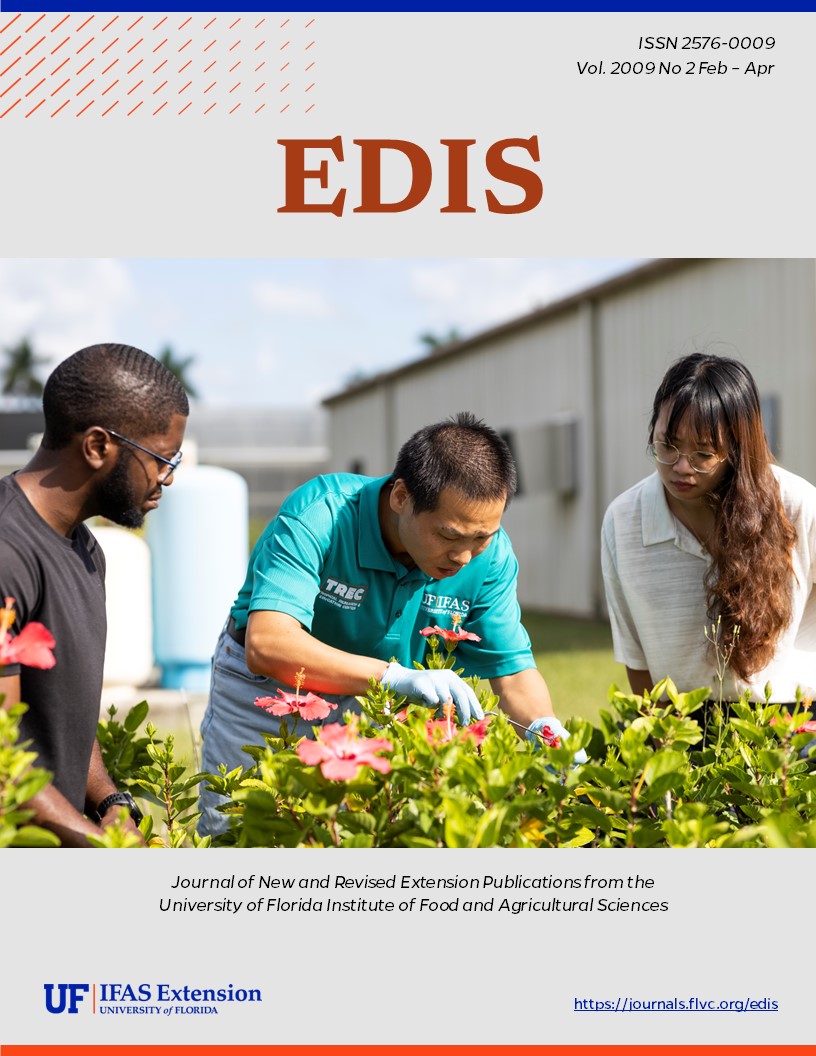Abstract
Revised! FOR-202, a 6-page fact sheet by L. Annie Hermansen-Baez, Jennifer Seitz, and Martha C. Monroe, describes key issues gleaned from a series of focus groups conducted by the U.S. Forest Service in 2000, and other related sources. Includes references. Published by the UF School of Forest Resources and Conservation, October 2008.
References
Dwyer, J.F., D. J. Nowak, M. H. Noble, and S. M. Sisinni. 2000. Connecting people with ecosystems in the 21st century: an assessment of our nation's urban forests. Gen. Tech. Rep. PNW-GTR-490. Portland, OR: US Department of Agricuture, Forest Service, Pacific Northwest Research Station. 483 p. Frumkin, H., L. Frank, and R. Jackson. 2004. https://doi.org/10.2737/PNW-GTR-490
Urban sprawl and public health: designing, planning and building for healthy communities. Washington, D.C.: Island Press. 366 p.
Graham, K. L. Human influences on forest wildlife habitat. In: The southern forest resource assessment. D. N. Wear and J.G. Greis, eds. 2002. Gen. Tech. Rep. SRS-53. Asheville, N.C.: U.S. Department of Agriculture, Forest Service, Southern Research Station: 63-90.
Hubbard, W. G. and D. A. Hoge. Managing private nonindustrial forestlands at the interface. In: Forests at the wildland-urban interface: conservation and management. S.Vince, M. L. Duryea, E. A. Macie, and L. A. Hermansen, eds. 2005. Boca Raton, FL: CRC Press: 225-68. https://doi.org/10.1201/9780203484463.ch17
Hull, R.B., R. Visser, and S. F. Ashton. Module 2: Managing interface forest. In: Changing roles: wildland-urban interface professional development program. M. C. Monroe, L.W. McDonell, and L. A. Hermansen-Báez, eds.. 2006. Gainesville, FL: University of Florida.
Hull, R. B. and S. I. Stewart. Social consequences of change. In: Human influences on forest ecosystems: the southern wildland-urban interface assessment. E. A. Macie and L. A. Hermansen, eds. 2002. Gen. Tech. Rep. SRS-55. Asheville, NC: US Department of Agriculture Forest Service, Southern Research Station: 115-29.
Monroe, M. C., A. W. Bowers, and L. A. Hermansen. 2003. The moving edge: perspectives on the southern interface, Southern Wildland-Urban Interface Assessment Focus Group Report. Gen. Tech. Rep. SRS-63. Asheville, NC: US Department of Agriculture, Forest Service, Southern Research Station. 35 p. https://doi.org/10.2737/SRS-GTR-63
U.S. Census Bureau. 2008. An older and more diverse nation by mid-century. http://www.census.gov/Press-Release/www/releases/archives/population/012496.html [Date accessed: October 9, 2008].
U.S. Census Bureau, Population Division. 2006. Table 9: Population estimates for the 100 fastest growing U.S. counties with 10,000 or more population in 2005: April 1, 2000 to July 1, 2005 (CO-EST2005-9).
Wear, D. N. 2002. Land use. In: The southern forest resource assessment. D. N. Wear and J. G. Greis, eds. Gen. Tech. Rep. SRS-53. Asheville, N.C.: U.S. Department of Agriculture, Forest Service, Southern Research Station: 153-173. https://doi.org/10.2737/SRS-GTR-53
Wear, D.N. and J. G. Greis, eds. The southern forest resource assessment. Gen. Tech. Rep. SRS-53. Asheville, N.C.: U.S. Department of Agriculture, Forest Service, Southern Research Station: 153-173.
Zipperer, W. Urban Influences on forest ecosystems. In: Human influences on forest ecosystems: the southern wildland-urban interface assessment. E. A. Macie and L. A. Hermansen, eds. 2002. Gen. Tech. Rep. SRS-55. Asheville, NC: US Department of Agriculture Forest Service, Southern Research Station: 73-91.

